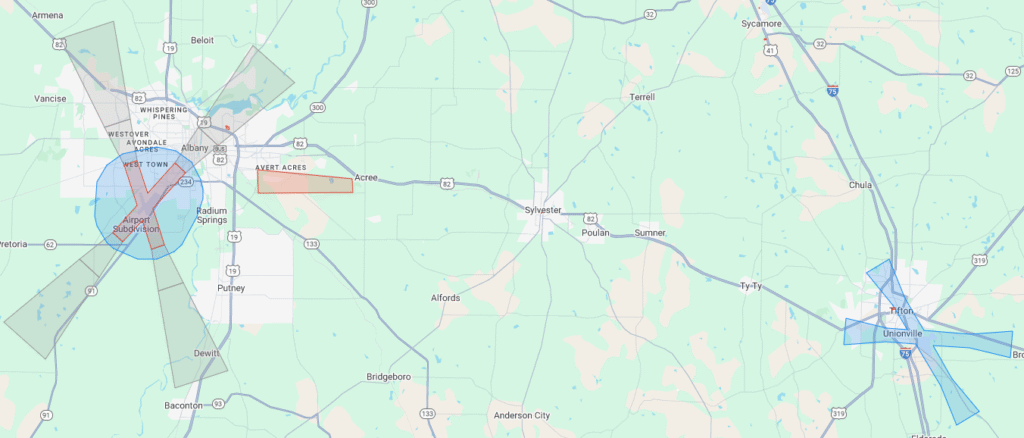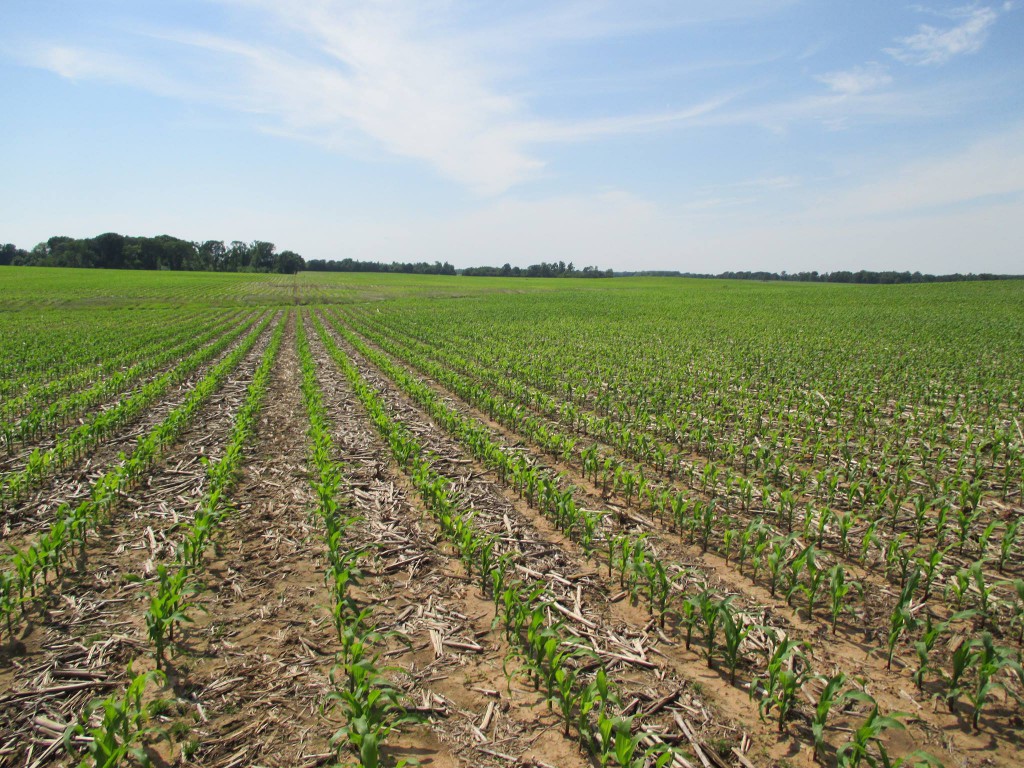By Chance Warren, Sarah Beth Thompson, and Wesley Porter
There is both an increased desire and an uptick in utilizing Unmanned Aircraft Systems (UAS) for the purpose of spraying or spreading materials in an agricultural setting. However, a few steps must be taken first to ensure each pilot/applicator has all the necessary paperwork to conduct a legal operation. This will range from obtaining the appropriate licensing as well as adhering to guidelines much like anyone else would when applying agricultural chemicals or even driving a car for example. Throughout this article the terms UAS, Unmanned Aircraft (UA), and drone will be used interchangeably as they appear on the Federal Aviation Administration (FAA) website.

Scheduling a Test
Go to the Integrated Airman Certification and Rating Application website and create an account to be issued an FAA Tracking Number (FTN):
From there go to PSI True Talent and schedule an appointment to take the following Exam: Unmanned Aircraft General – Small (UAG) (scroll to the very bottom of the page and choose a time and test center, the cost is $175):
This Exam will qualify you for the 14 CFR FAA Part 107 Small Unmanned Aircraft Systems or (UAS) Pilot License. Upon completion you will receive your score, with a 70 or above being considered a passing score. After submitting test results to IACRA for approval, a temporary copy of your license can be printed off until the hard card arrives.

The test is focused on sectional charts, airspace classification, pilot guidelines, and some airport proceedings. Free practice tests and apps are available online.
A similar book that will be provided during the test can be found here:
Further details regarding the testing process can be found at the following website which contains the necessary links to IACRA and PSI:
Applying for Licensing and Registration
Once you have your FAA Part 107 you can then begin applying for the remaining additional licenses required for aerial application.
49 USC 44807 – Special Authority for Certain Unmanned Systems: This is a petition that must be filled out to fly UASs that exceed 55 lbs. in weight (Part 107 only covers UASs weighing between 0.55 and 55 lbs). This takes roughly 2-3 months to process and is valid for all FAA approved spray UASs.
Certificates of Waiver or Authorization (COA) may be required prior to obtaining the Sec. 44807 exemption to grant access by the FAA to cover operational approval for specific airspace (this is not required within class G airspace up to 400 ft above ground level as a “blanket” COA will be provided when the UAS operator possesses the Section 44807 exemption).
Instructions can be found at the following links:
14 CFR Part 91 – General Operating and Flight Rules: Adhere to these when operating an UA as they are the rules and regulations the pilot in command must obey. Information can be found here:
FAA Form 8710-3 –An application to determine if one is eligible for the Agriculture Aircraft Operator Certificate. (This unlocks the Agricultural Aircraft Operations License):
14 CFR Part 137 – Agricultural Aircraft Operations: This covers dispensing chemicals and agricultural products with a UAS. This is the costliest process in terms of time & money as it is roughly a half a year endeavor coupled with approximately $2,000 in legal or counsel fees to have it done by a lawyer or company. It should be noted that this is required for any product applied with a UAS including chemicals, fertilizers, and seed. Email exemption number after the FAA Form 8710-3 approval to UAS137Certificates@faa.gov for the FAA to begin the certification process.
14 CFR Part 47 -This is for drones above the 55 lbs cutoff which are to be registered under the same method as traditional aircraft registration, which occurs by mail. This will include filling out AC Form 8050-1, provision of a notarized affidavit that provides a description of the UAS, establishes ownership via AC Form 8050-2 (bill of sale), ensures the UAS isn’t registered in another country, and a declaration of ownership and affirming the information is true. A N-number will be assigned (or selected for $10) which serves as the aircraft’s nationality, identification, and registration. The cost of just registration is $5 and can be paid via check or money order made payable to the Federal Aviation Administration. Their address for U.S. Postal Service, Regular and Priority Mail:
FAA Aircraft Registration Branch
P.O. Box 25504
Oklahoma City, OK 73125-0504
Additionally, this link will provide the full contact information of the FAA Aircraft Registration Branch:
Additional required licenses include both the Commercial Pesticide Applicator License & the Aerial Pesticide Application Certificate
Setting up an Account
Our program is currently using a DJI T40 so this article is tailored to that platform, however other companies will slightly differ from this. Showing the process through the DJI system and software is not endorsement by our program or UGA Extension of the DJI products or services it is meant as an example only.
To fly in controlled airspace you will need to create a DJI Flysafe account by using an email address that is linked with your DJI account. From here you will need to navigate to device management and add your respective platform to the system. Once this is completed you may be able to request permission to fly in controlled airspace (noted by the red and blue colored regions, while the grey region implements a flight ceiling) as failure to do so will prevent the drone from being able to takeoff. Generally, approval happens very quickly. Once approved follow the instructions provided by DJI in the email containing the steps to upload permissions to your respective device. Approvals can last for either a day or up to a year.
As shown in the image below red areas are restricted to no authorized UAS flights, blue areas are authorization zones which may be unlocked, and the grey areas are altitude zones where UAS pilots must be aware of heavy air traffic and yield the sky to said aircraft as they approach or pass.

The DJI Agras Management Platform will allow for a review of previous flight missions and keeps track of hours and acres covered. Furthermore, flight logs can be downloaded in order to monitor more fine details such as amount of product applied and the duration of each flight mission. The caveat with this is that values are reported in metric rather than imperial.

Things to Consider
The ASABE standard for small granular broadcast applicators (ASAE S341.6 MAR2024) recommends applying dry materials when windspeeds do not exceed 5 mph, while the labels for most liquid chemistries advise they shouldn’t be applied in wind speeds of 10 mph or greater. Always adhere to the guidelines provided on the label regarding application. The higher the altitude you select for flight plan will increase the area covered at the cost of uniformity. Lower altitude flight plans result in greater uniformity of distribution, however, incur greater effects from propwash. Propwash being the downforce of air generated by the movement of the propellers to create lift. However, propwash may be desired or even beneficial to open a canopy and allow greater coverage of a material to the soil or leaves. These two factors along with particle size are paramount in the potential for drift and ensuing damage. This is typically associated with light or small particles, where there is greater potential for drift and the same can be said regarding greater propwash and windspeed.
We strongly encourage anyone planning to do any aerial applications to obtain the proper licenses and follow all regulations. The FAA is becoming more aware of activities conducted by non-licensed persons or those possessing exemptions and is investigating further into these pilots/applicators. Therefore, it is important to ensure you have all the proper licensing prior to flying as well as applying any materials.

While we have provided a rough guide here on what is needed to work through the licensing process for UAS Aerial Application, this is not meant as an all-inclusive guide or a step by step procedure that guarantees you will have all the necessary licensures and paperwork to become a Commercial Spray and Application UAS Pilot. It is meant as an educational tool to provide information on what is required. It is up to the individual to ensure they have followed all steps required by all entities to be legal before they make any applications.
